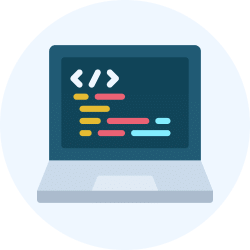Software Development Exam > Software Development Videos > Android Application Development (Mobile App) > Android Application Development Tutorial - 181 - OpenGL Culling
Android Application Development Tutorial - 181 - OpenGL Culling Video Lecture | Android Application Development (Mobile App) - Software Development
FAQs on Android Application Development Tutorial - 181 - OpenGL Culling Video Lecture - Android Application Development (Mobile App) - Software Development
| 1. What is OpenGL culling in Android application development? |  |
Ans. OpenGL culling is a technique used in Android application development to increase rendering performance by discarding the rendering of objects that are not visible in the final scene. It involves the removal of polygons or vertices that are not within the view frustum or are occluded by other objects.
| 2. How does OpenGL culling improve rendering performance in Android applications? |  |
Ans. OpenGL culling improves rendering performance in Android applications by reducing the number of unnecessary computations and memory usage. By discarding objects or parts of objects that are not visible, the GPU can focus on rendering only the visible geometry, resulting in faster and smoother rendering.
| 3. What is the difference between backface culling and frustum culling in OpenGL? |  |
Ans. Backface culling is a technique in OpenGL where polygons that are facing away from the camera are discarded, assuming they will not be visible in the final scene. Frustum culling, on the other hand, involves discarding objects or parts of objects that are outside the camera's view frustum, which defines the visible portion of the scene.
| 4. How can I enable culling in my Android OpenGL application? |  |
Ans. To enable culling in an Android OpenGL application, you need to call the glEnable(GL_CULL_FACE) function. This function enables the culling functionality, and you can specify the culling mode using the glCullFace(GL_BACK) or glCullFace(GL_FRONT) functions to cull the back-facing or front-facing polygons, respectively.
| 5. Can I selectively disable culling for certain objects in my Android OpenGL application? |  |
Ans. Yes, you can selectively disable culling for certain objects in your Android OpenGL application. By calling glDisable(GL_CULL_FACE) for specific objects or parts of objects, you can disable culling for them, allowing all the polygons to be rendered regardless of their orientation. This can be useful in cases where you want to render both sides of an object or when dealing with complex geometries that require both sides to be visible.
Related Searches















